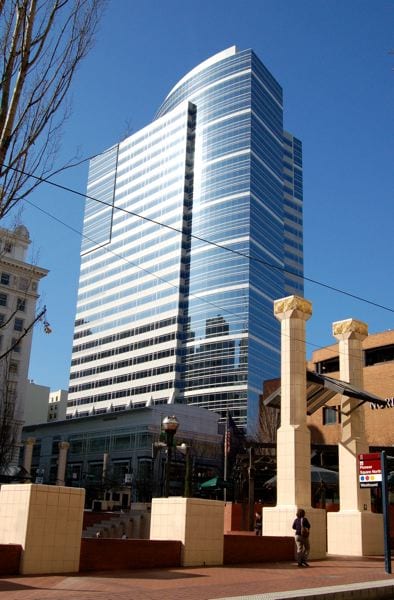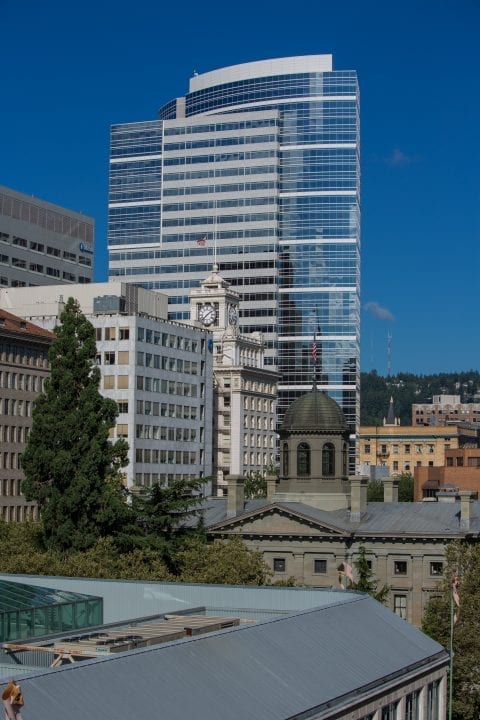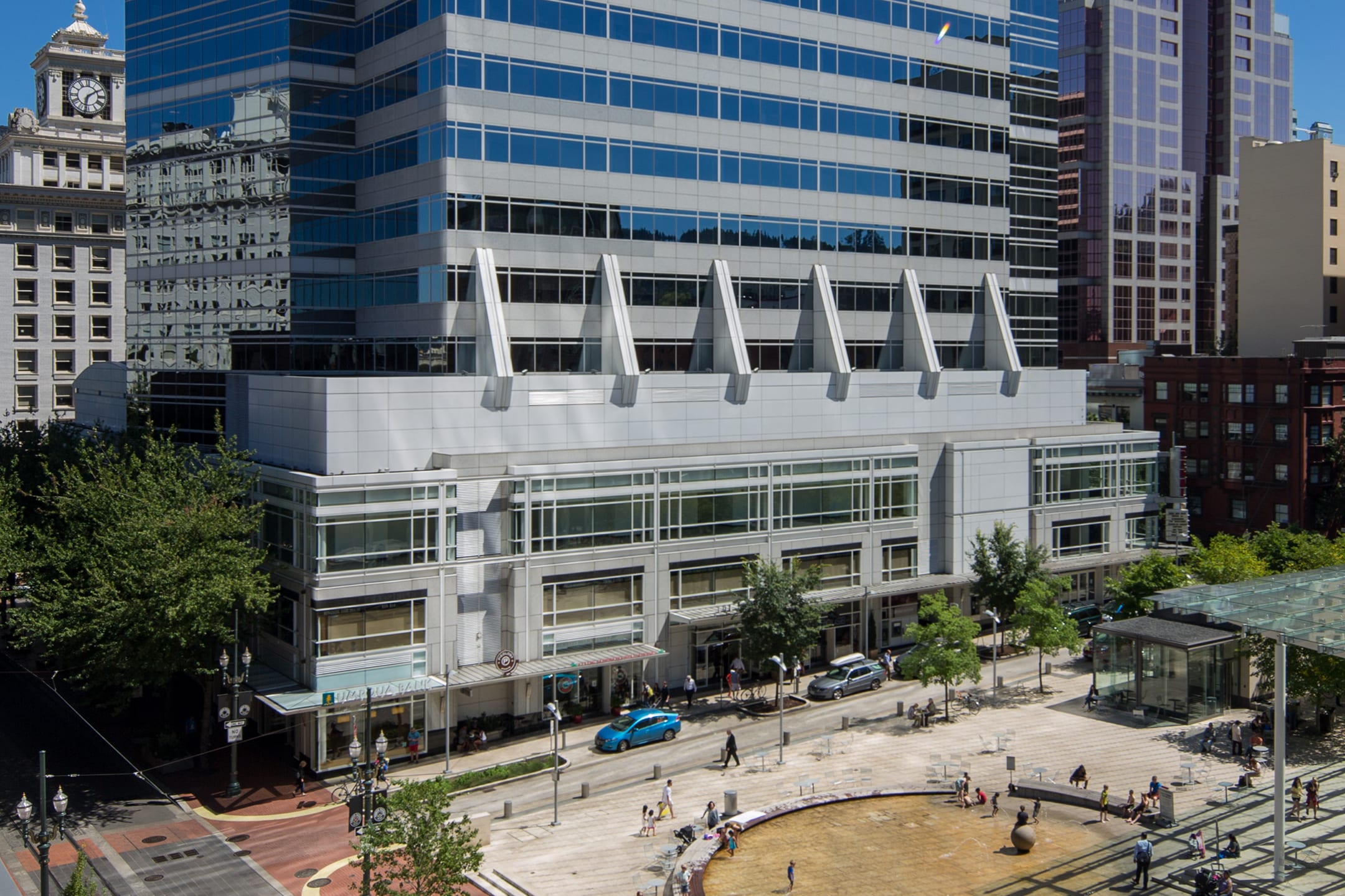 By Brian Libby
By Brian Libby
This year three defining works of Portland architecture are celebrating their 20th anniversaries.
Each is different from the other, but all three were built from designs that endure: the Fox Tower downtown, the Lan Su Chinese Garden in Old Town, and the Wieden + Kennedy Agency World Headquarters in the Pearl District.
Like 2020, the year 2000 was transitional: a new decade (as well as a new century and even a new millennium), with changing political winds and a divided nation. Yet compared to today, 2000 was a more optimistic time, which these three landmarks exemplify
Seen from outside, the Wieden + Kennedy building is a handsome enough renovation of a 1908 warehouse, originally constructed for the Fuller Paint company and, for decades afterward, a cold-storage facility. Inside, architect Brad Cloepfil and his firm, Allied Works, created a wondrous atrium: full of light and resplendent with natural wood. To me, it’s the best work of Portland architecture in our time. It’s just too bad the public can’t see it more easily, because it feels like a civic space: a secular cathedral.
The 27-story Fox Tower occupies a prominent perch on Broadway facing the southwest corner of Pioneer Courthouse Square. Designed by TVA Architects (then Thompson Vaivoda), it was built on the site of the old Fox Theater from 1910 (previously the Heilig Theater and the Mayfair), which was known best as a movie palace but also performances by icons like Vaslav Nijinsky, Thelonious Monk, and Nirvana. The office building that replaced it was constructed for theater-chain mogul turned real estate developer Tom Moyer, and was one of the city’s first podium-and-tower combinations, offering street-front retail while maintaining a slender upper form. The curving façade is quintessentially late-1990s, but less of a visual cliché than the barrel and dome-shaped roofs of other towers from that Clintonian era. That’s because the Fox Tower’s curve is functional: it allows more sunlight to hit the square. In fact, the curve is what elevates the design from being an otherwise rote office building.
 PMG PHOTO: BRIAN LIBBY – Fox tower
PMG PHOTO: BRIAN LIBBY – Fox tower
Originally known as the Classical Chinese Garden, Lan Su is a whole other world from contemporary office towers and renovated warehouses. A collaboration between the Suzhou Classical Garden Architecture Company and Portland’s Merryman Barnes Architects (then Robertson Merryman Barnes), it is probably the most hand-built work of architecture in the central city. Like Wieden + Kennedy, it doesn’t look that inviting from the street. But within Lan Su’s tall white walls is an oasis of water, greenery and ancient Chinese architectural traditions. It’s not a public park — you have to pay admission — yet particularly in these times of tension, it’s a gift to the city: a beautiful, transporting place of respite and reflection.
What do they have in common? Though they arrived in the first year of the 21st century, each place is tied to a meaningful deeper history. They’re all private-sector efforts, but they consider the public good. Each one is artful in celebrating and absorbing natural light. And each project, in its own way, is ambitious.
Obviously, this decade is off to a rough start, and it’s hard to imagine what our 2020s landmarks might become — or if we’ll even have the resources and ambition to build them. Yet every crisis is an opportunity, and I’m excited to see how an enlightened new generation of designers, builders and community leaders will retrofit our city for a taller, greener and more equitable future.

